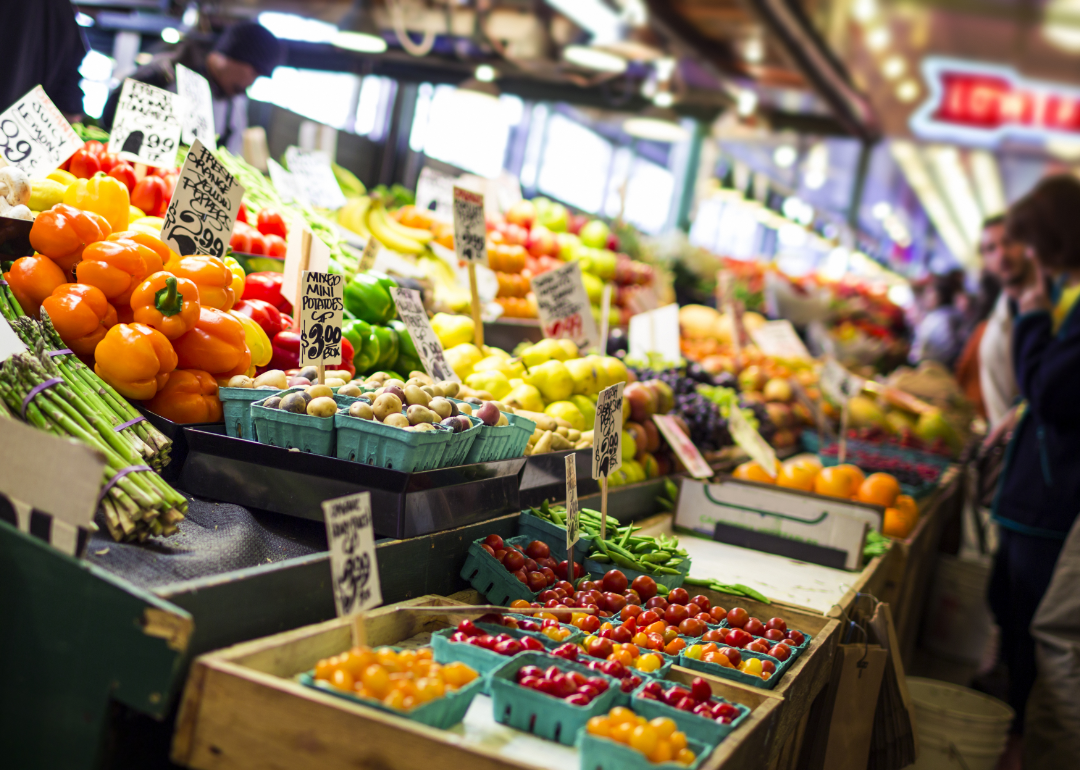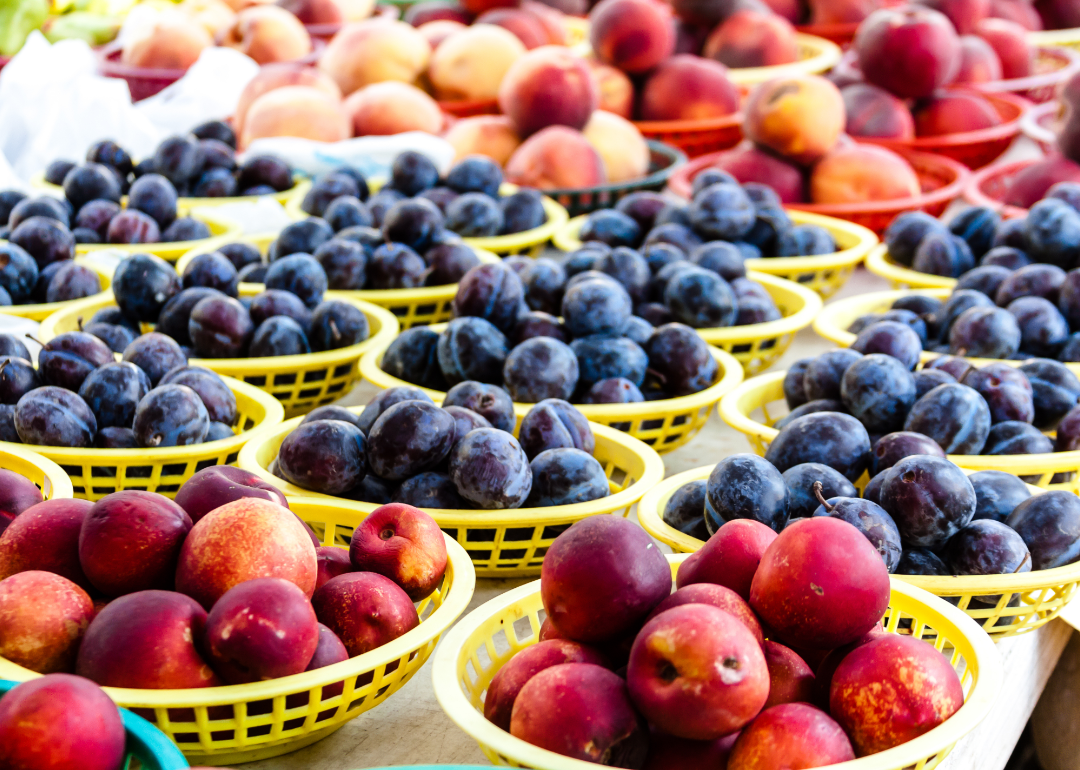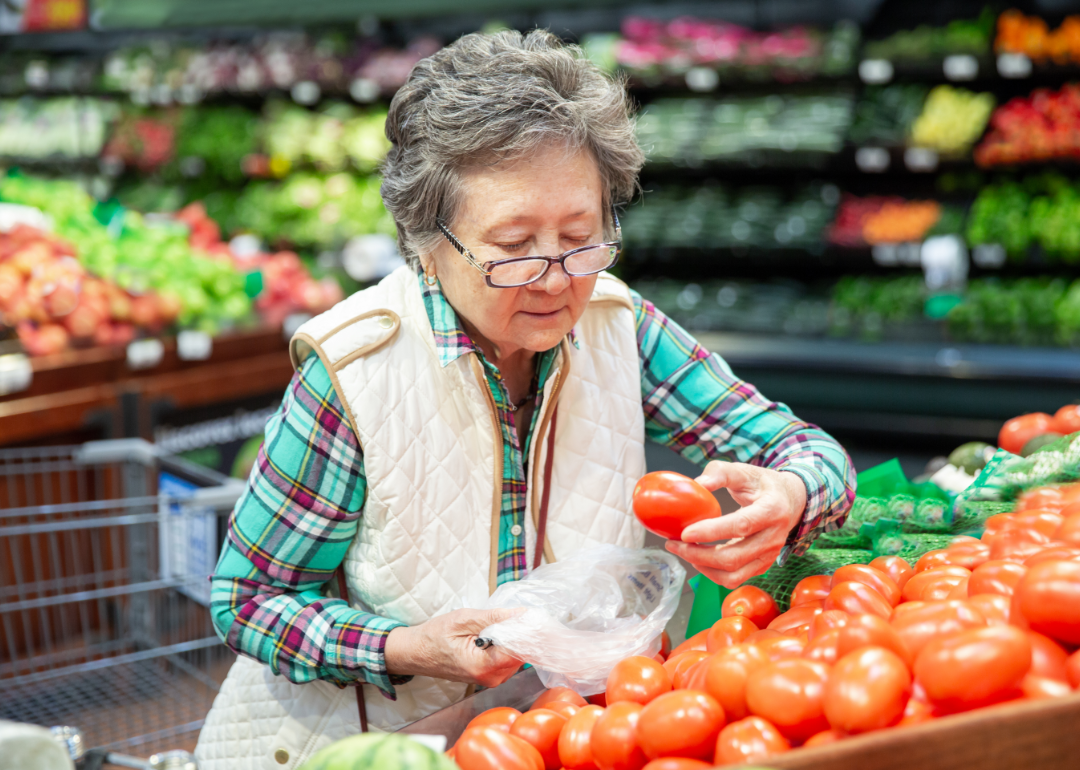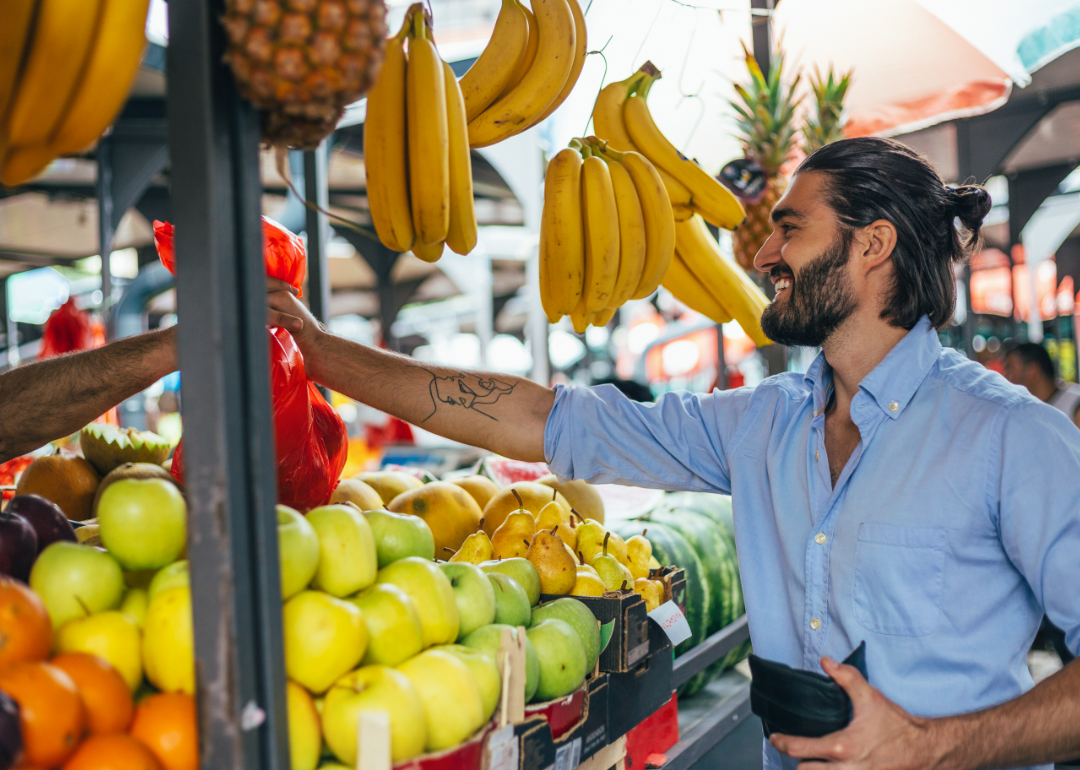8 tips to pick the best produce

Canva
8 tips to pick the best produce
A variety of fresh looking fruits and vegetables on display at a market.
We’ve all been there: Looking forward to some healthy snacking, you empty a container of blueberries to wash them — only to discover mold on the fruit you purchased just hours ago. It’s frustrating, a bit infuriating, and oh-so disappointing.
Fortunately, Experience Life has compiled a few tips and tricks to employ the next time you’re shopping for produce.
Because produce is a living thing, knowing what to buy often comes down to recognizing where the veggie or fruit is in its life cycle — as well as where it’s from and how it was harvested. With practice, you’ll be able to select the freshest picks, confident your produce will be at its most nutritious, flavor-rich best.
![]()

Canva
1. Use your senses
Baskets of apricots, plums and peaches on display at a farmer’s market.
Sight, smell, touch, and taste—if you’re allowed a sample—are your most important tools when shopping for succulent, flavorful vegetables and fruits.
Vegetables are picked ripe and don’t ripen further after harvest, so many tend to have a longer shelf life compared with more fragile fruits, which can be sold at any stage of their life cycle. That’s one reason it’s essential to know the indicators of ripeness.
As a general rule, produce should feel heavier when ripe, thanks to its high water content. As they begin to degrade, vegetables and fruits lose weight, so avoid any that feel lightweight for their size, especially if they’re bruised or mushy.
You can usually also tell by sight whether items are in good shape. Take an extra moment to glance at the cut stem, advises Cynthia Sandberg, owner of Love Apple Farms, a biodynamic farm in Santa Cruz, Calif. “If the cut stem is brown or wrinkled, the produce is older than you may want.”
Aroma is another good indicator of ripeness. Berries should smell fresh and sweet, with no moldy whiffs. Pineapples and stone fruits, such as peaches and nectarines, should have a rich, fruity aroma. Ripe tomatoes yield a pleasant earthy smell, familiar to anyone who’s plucked a sun-drenched tomato right off the vine.

Canva
2. Think ahead
A senior woman inspects the ripeness of tomatoes in a market.
Before shopping for produce, it’s worthwhile to consider when and how you want to use it, as both have a bearing on the preferred stage of ripeness.
Tomatoes are a good example, Sandberg says, because they have a fleeting window of perfect ripeness — though you can use them earlier. “Tomatoes should be picked when they yield to gentle pressure,” she says, “unless you’re making fried green tomatoes. Or if you want to take tomatoes to your friend’s house for them to enjoy over the next week.” In both cases, slightly underripe tomatoes are the perfect pick.
If you’re growing a garden, keep a close eye on your veggies and fruits so you can harvest and enjoy them when they’re at their peak.
3. Store strategically
Fruits that continue ripening after harvest are called climacteric, a category that includes mangoes, bananas, avocados, pears, nectarines, peaches, and apricots. If you buy them before they’re ripe, you can leave them on your countertop until their aromas and texture let you know they’re ready to be eaten or refrigerated, which will slow the ripening process.
Some fruits do well when stored at room temperature; most can be refrigerated for a short time to keep them from rotting — and whether you choose to do so is a matter of personal preference. For example, we’re often told to never refrigerate tomatoes because it can affect their texture. But putting those almost-too-ripe tomatoes in the fridge can buy you an extra day or two if you’re not planning on using them right away.
4. Shop with the seasons
“It goes without saying that fresh, seasonal fruits and vegetables provide the foundation for delicious, nourishing dishes,” writes chef Bryant Terry in his book Afro-Vegan. Shopping for what’s in season allows you to get your hands on the freshest, most nutritious produce, and it’s a great excuse to try out new foods and recipes.
For example, if it’s spring, look for spring favorites like asparagus, artichokes, radishes, and rhubarb. We’re accustomed to buying these items at any time, but eating them in springtime aligns our diets with corresponding seasonal shifts in our bodies, according to health traditions like Indian Ayurveda and Traditional Chinese Medicine.

Canva
5. Keep it local
A man buys a bag of fruit at an outdoor farmer’s market.
Local farmers’ markets are some of the best places to find the freshest produce. Often, the merchandise has just been picked that morning and is more nutrient-dense than anything you can buy at the supermarket. That’s because produce starts losing nutrients once it’s harvested: A University of California, Davis, study found that vegetables lost between 15 and 77 percent of their vitamin C during seven days of storage.
Farmers’ markets are also a great source of unusual cultivars and heirloom varieties that can transform your cooking.
Wine connoisseurs may be familiar with the concept of terroir, or sense of place. A marriage of elements — climate, soil, elevation, farming methods — gives the wine a distinctive identity that speaks to its origins: the land where the grapes were grown.
Terroir also applies to vegetables and fruits. Greens, spring onions, and strawberries purchased from a farm in your area will have a similarly unique character, particular to your locale.
6) Know your etiquette
It’s perfectly acceptable to pick up one or two pieces of produce as you shop to check if they’re in good condition, but it’s considered bad form to paw through crates, squeezing each avocado in search of the ideal one.
This is especially true at farmers’ markets, Sandberg notes. “Ask the farmer before handling the produce. They may want to select and bag for you,” she says, adding that protocol can differ by location. “In European farmers’ markets, it is absolutely forbidden to touch the produce if you’re a customer.”
7) Swap away
If, while perusing the produce aisle, you find shallots that don’t look their best, scoop up a bunch of leeks to take their place. Mealy looking apples? Choose pears instead. No kale in sight? Try Swiss chard, collard greens, or spinach.
Such flexibility ensures you get the freshest veggies and fruits while diversifying your diet — and you may discover your original recipes become even tastier with the alternative.
8. Don’t forget common sense
Your own judgment will typically lead you in the right direction. Sprouting potatoes and wrinkled apples have seen better days. Soft, mushy tomatoes shouldn’t make their way into your shopping basket, either.
Produce is often waxed before it hits the supermarket shelves, so the shiniest, most tempting-looking veggies and fruits won’t necessarily be the tastiest. This is true even of some organic produce.
Though the Food and Drug Administration says the wax is safe to eat, you might prefer to remove it—and the bacteria and microorganisms that could be clinging to it—before using the produce. Most coatings can be scrubbed off with a brush under hot water, but you can also add a tablespoon of a household acid, like lemon juice, to a basin of hot water to help do the job.
This story originally appeared on Experience Life and has been independently reviewed to meet journalistic standards.



